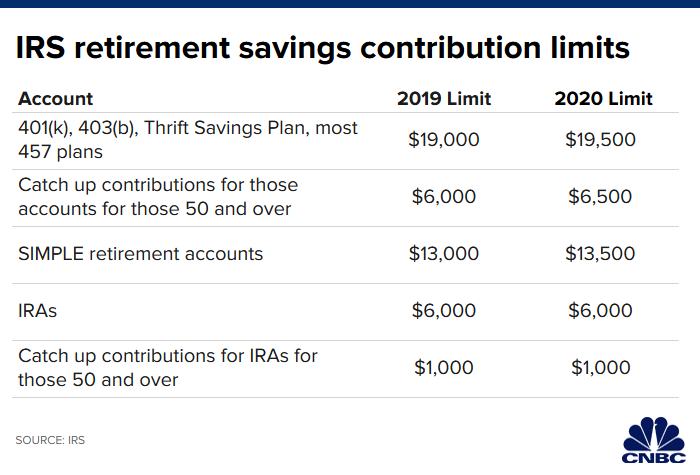When the clock strikes midnight on Dec. 31, it will not only usher in a new decade. It will also bring in a host of retirement changes.
And that could have big implications for your money.
The good news is that you will be able to save even more in your retirement accounts next year, thanks to higher limits from the IRS. And certain age limits for who can save will disappear, thanks to changes from Congress.
Meanwhile, individuals who are already in retirement could see a slight bump to their Social Security benefits. On the other hand, they also need to be prepared for potentially higher Medicare costs.
Here’s a breakdown of what’s coming.
Retirement savings
Next year, you will be able to save as much as $19,500 in your 401(k) plan and up to $6,000 in your individual retirement account.
Savers who are age 50 and over will be eligible to put away up to $6,500 more in their 401(k) plans and another $1,000 in their IRAs.
What’s more, recent legislation passed by Congress will make it possible for you to still save in your IRA past age 70½. With that change, there is no age cap on making those IRA contributions, so long as you have earned income.
Workers who have access to a retirement plan such as a 401(k) through a current employer can also continue to save money towards retirement regardless of their age.
The chart below shows how those limits have changed since last year.

Social Security benefits
If you are receiving Social Security, you can expect a modest increase to your checks next year.
That extra 1.6% for 2020 is less than the 2.8% boost retirees received in 2019. It is in line, however, with the average 1.4% cost-of-living adjustments over the past decade. The changes are calculated based on inflation.
The chart below shows how much of an increase you can expect based on the level of benefits you’re receiving.

Medicare premiums
You may need to brace yourself for higher costs next year if you are on Medicare.
Standard monthly Part B premiums will increase to $144.60 in 2020, up from $135.50 in 2019.
How much you pay depends a lot on your income.
One rule, called the hold harmless provision, prevents individuals from having their Social Security benefits reduced because of higher Medicare premiums.
But many individuals will pay more for their premiums based on income-adjusted amounts.
The chart below shows how much coverage will cost you if you have income in excess of $87,000 individually, or $174,000 if you’re married and filing joint tax returns.


